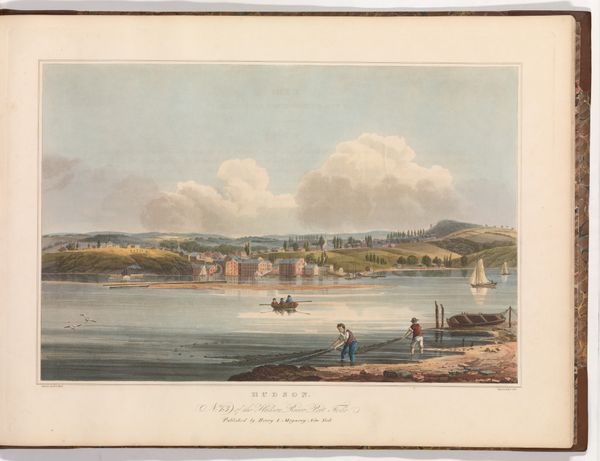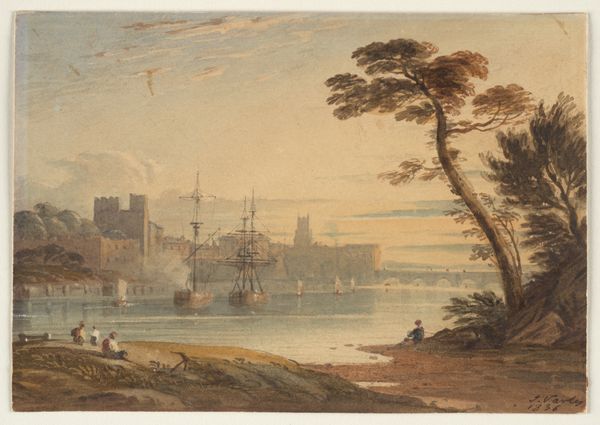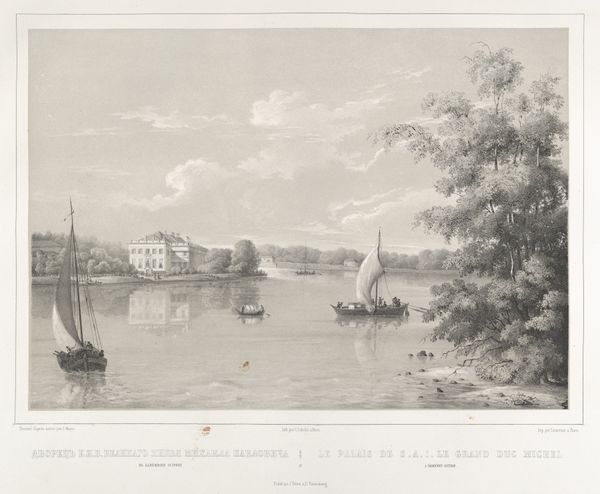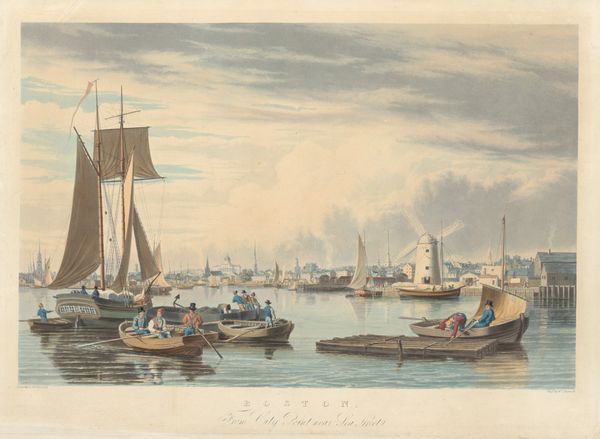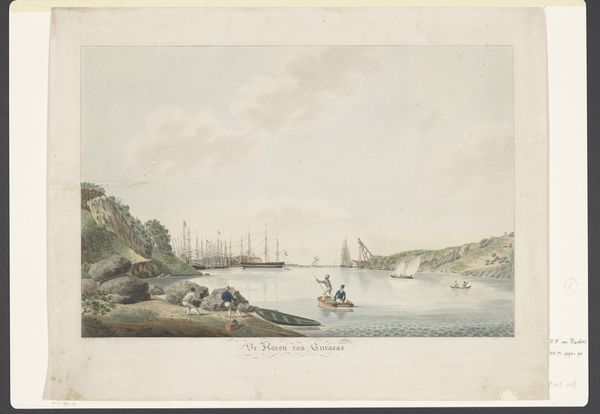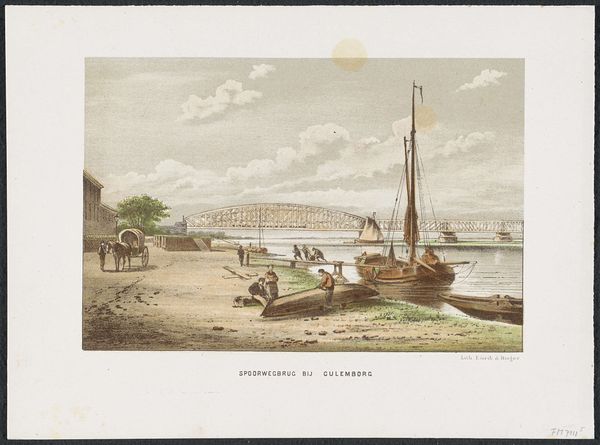
print, plein-air, watercolor
# print
#
plein-air
#
landscape
#
watercolor
#
coloured pencil
#
romanticism
#
cityscape
Dimensions: sheet (trimmed within plate mark): 51 x 68.6 cm (20 1/16 x 27 in.)
Copyright: National Gallery of Art: CC0 1.0
Editor: This watercolor print is titled "Baltimore Taken near Whetstone Point" by William James Bennett, possibly created in 1831. The scene feels so peaceful, with a harmonious balance between the natural elements and the cityscape in the background. What do you see in this piece from a formalist point of view? Curator: The strength of this work lies in its strategic composition. Notice how Bennett uses a repoussoir element – the large tree on the left – to frame the cityscape, pulling the viewer into the pictorial space. Observe the layering: foreground with figures and cattle, middle ground dominated by the water and sailing vessels, and the background showcasing the architectural structures. The muted color palette, while characteristic of Romanticism, contributes to a visual unity. Do you agree? Editor: Absolutely, the color palette gives it a tranquil and coherent feel. How does the arrangement of forms within the painting contribute to the overall meaning? Curator: Semiotically, each element can be decoded. The ships symbolize trade and progress, the cows representing pastoral tranquility, and the distant city suggesting burgeoning urban life. But it is the interaction between these elements that’s key. Note the balance achieved through the repetition of vertical masts mirroring the upright buildings. The curve of the shoreline is echoed in the billowing clouds, connecting land and sky in a visual dialogue. Do you perceive a certain structural framework governing the seemingly ‘natural’ landscape? Editor: Yes, the painting definitely has more structure than I initially perceived! It is not a direct snapshot but rather a carefully crafted interpretation. Curator: Precisely. This orchestrated composition, mediated by color and line, shapes the viewer’s perception, turning a landscape into a carefully considered statement about early 19th-century America and its developing identity. Editor: I'm walking away with a much greater appreciation for Bennett's print, now seeing all these structural relationships. Thanks so much. Curator: My pleasure, it is often in that framework that we can observe artistic excellence.
Comments
No comments
Be the first to comment and join the conversation on the ultimate creative platform.




